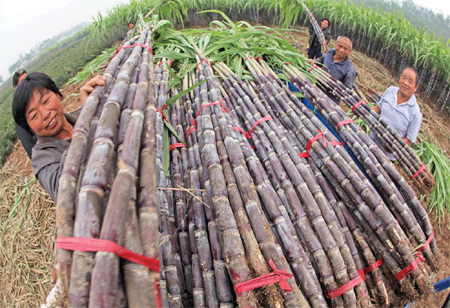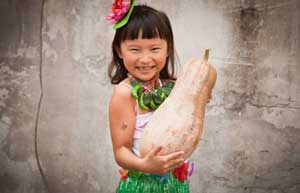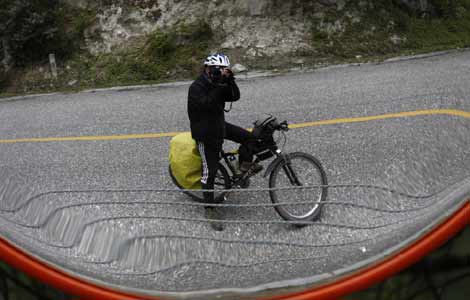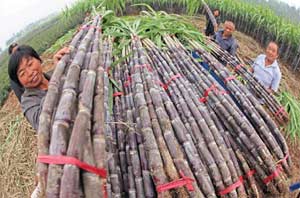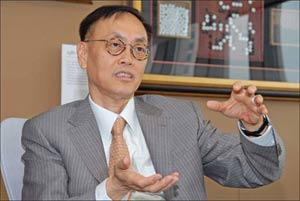Bittersweet crop
Updated: 2011-10-07 11:41
By Li Jiabao and Ding Qingfen (China Daily)
|
|||||||||
Sugar farmers hit by rising labor costs, falling yields
|
|
Despite the rise in the price of sugar nationwide over recent years, life is not sweet for China's sugarcane farmers. The rising costs of labor and raw materials, limited arable land and outdated technology are squeezing profits and leaving a bitter taste in the mouths of those working in the industry.
Ling Dongbiao, a 48-year-old who has been planting sugarcane since his childhood in the Guangxi Zhuang autonomous region, is a prime example.
"What I now earn from planting sugarcane is much higher than in 2002 or 2003, but my costs have also increased," he says.
Currently, it costs between 120 yuan (14 euros, $18) and 130 yuan a day to hire a worker to chop or transport sugarcane. The figure was just 30 yuan five years ago.
Ling lives in a two-story building in Nanuo village in Guangxi's Chongzuo city, next to his three-hectare sugar field.
He is one of the 1.31 million sugarcane farmers in Chongzuo city, which has produced more than 2 million tons of sugar annually since 2003. That's about one-fifth of China's annual output, and has resulted in the city acquiring the nickname, "the home of Chinese sugar".
The price of sugar has been rising since the second half of 2007. On Aug 12 this year, it surged to a record high of 8,000 yuan a ton, up from about 3,000 in 2008, according to statistics from the China Sugar Index, one of the nation's leading price monitors.
And the price is expected to keep climbing, to between 8,000 yuan and 10,000 yuan a ton.
As the country's largest sugar-producing region, Guangxi accounts for two-thirds of the nation's production with annual output of about 7 million tons and approximately 20 million farmers and 35 companies engaged in the regional industry.
"The sugar price will continue to rise before the end of the year. A price between 8,000 and 10,000 yuan a ton would be reasonable," says Mo Jiang, vice-president of Chongzuo Xianggui Sugar Company Ltd, a leading producer in Guangxi, which has an annual output of 165,000 tons.
The rise in sugar prices would suggest that his company could reap greater profits, but Mo denies that this is the case, because of rising costs, especially for labor, and a decrease in yields because of unfavorable weather in the months since winter ended.
"In addition to fertilizer and equipment, laborers are the major source of the rising costs," Mo says.
"More and more members of the young generation in the village would like to move to cities for job opportunities rather than planting sugarcane here."
It's estimated that in 2010, labor costs accounted for about 39.5 percent of the total investment of the average cost of 32,250 yuan for each hectare planted with sugarcane in Guangxi.
However, since June the region has experienced a severe drought, which has led to a reduction in output.
The price hike of Chinese sugar is a direct result of the nation's huge level of consumption. And the problem has become more and more prominent in recent years, as demand grew rapidly.
China - the world's second-biggest sugar consumer after India - produced 11 million tons in 2010, but demand stood at between 14 million and 15 million tons between October 2009 and September 2010.
China's sugar output will reach 11.77 million tons in 2011, up 11 percent year-on-year, according to the sn110.com website, the largest agriculture business consultancy in Hubei province.
However, the rising standard of living means the demand for sugar will continue to grow in the nation that consumes about one-ninth of the world's total output.
Mo predicts that the nation's annual consumption will continue to increase by between 5 and 8 percent in the coming years.
"There is much room for China to increase its sugar consumption. Annual per capita sugar consumption is about 10 kilograms (kg), much lower than the 30 kg seen in Western countries," he says.
The widening gap between supply and demand has resulted in a rise in imports. Statistics from the General Administration of Customs show that the country imported 520,000 tons of sugar in the first half of this year alone, up 27.4 percent year-on-year.
In July, imports from Brazil totaled 260,000 tons and China became the biggest destination for Brazilian sugar exports that month.
Kingsman SA, a Switzerland-based international sugar consultancy, said China will import 2.33 million tons of sugar this year, and that figure will increase to 2.45 million tons in 2012 because of the recent dry weather in Guangxi.
Kingsman said that China will soon overtake the European Union to become the world's biggest sugar importer, with the supplies coming mainly from Brazil, Thailand and India.
Since 2010, the government has put approximately 1.68 million tons of sugar from the national stockpile on the market to curb surging prices.
In addition to rising costs, limited land for growing sugarcane and the low level of mechanization for collection and transportation are also making the industry a less attractive proposition.
A Guangxi local government report said that the area available for cultivation is 1.07 million hectares, and it is highly unlikely to expand because of the hilly nature of the area.
The topography of the region also makes it difficult for farmers to mechanize the planting and collection of sugarcane, pushing up costs.
In Guangxi, the cost of harvesting and collection ranges from 50 to 60 yuan a ton, accounting for one-fourth of the cost of planting sugarcane, and is six or seven times more that at mechanized farms in other producing nations, such as Brazil.
While the majority of sugarcane in Guangxi is collected manually, the amount harvested by machine in Brazil is 50 percent, while in Cuba the figure rises to 70 percent.
"The city is just a big producer of sugarcane. But our competitiveness is still quite low and we have no influence on prices or trade and distribution," says Zhao Leqin, Party chief of Chongzuo city.
Chongzuo Xianggui Sugar's Mo expresses his concerns about the region's sugar industry, which he says will wither as a result of higher costs coupled with limited output.
"If no measures are taken, the whole sugar industry in Guangxi will die," he says.
Sugar producers are attempting to diversify their business by transforming sugarcane into grain-based alcohol and paper.
Chongzuo Xianggui Sugar is one of these concerns which is trying to make optimal use of its resources. The waste water from its sugar production process is now used to irrigate cane fields instead of simply draining into rivers.
Zhao says industrial transformation is the key for the industry's survival. "We could also consider further processing of the sugar, producing goods such as candy and chocolate, to increase profits. Bagasse (the matter left after the canes are squeezed to extract the juice) could also be used for making paper dinner boxes, while the leaves and the ends of sugarcanes can be processed into animal feed."
But the most important factor for the survival of the industry will be support through central government policies.
"Measures focusing on subsidies and prices should be implemented to encourage farmers and sugar producers to become more involved in the business," Mo says.
Huo Yan contributed to this story.
